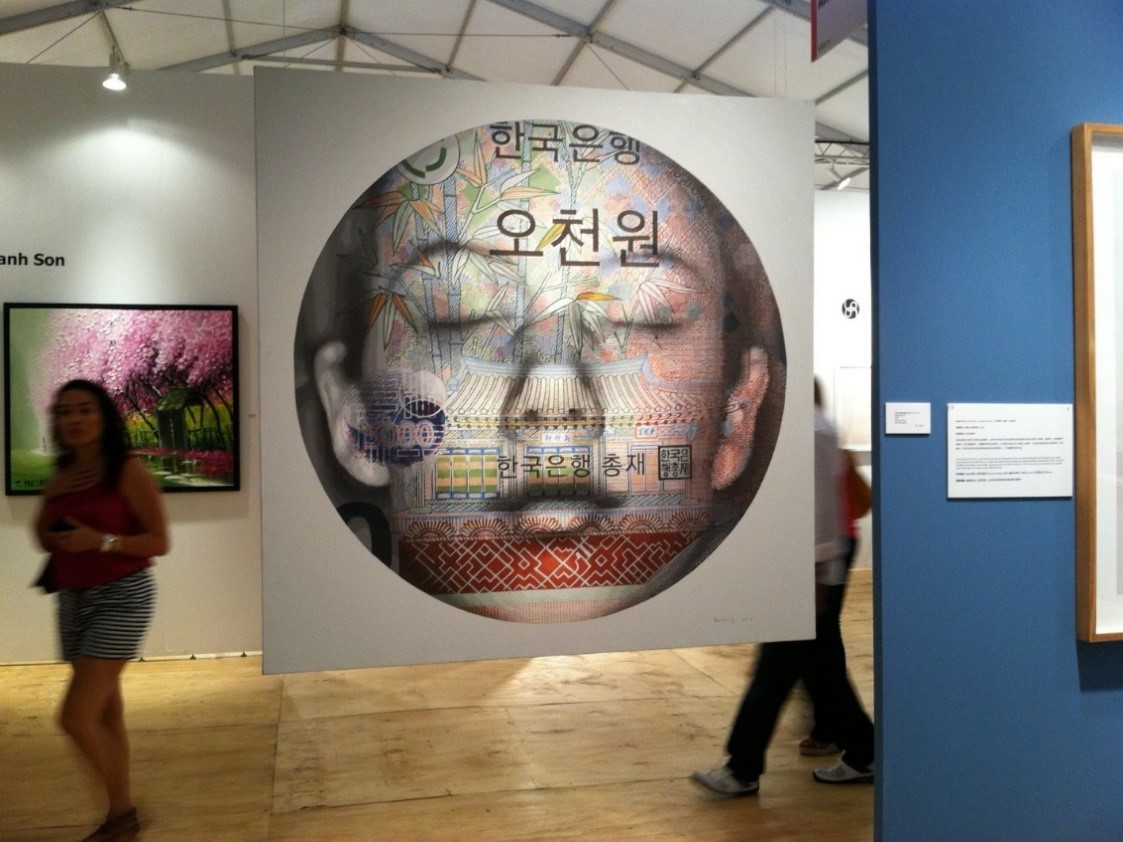
Kiaf SEOUL 2024 Poster ©Kiaf Official Website
September's hot topic revolves around
the joint hosting of the Kiaf and Frieze art fairs, providing a perfect
backdrop to discuss the recent art fair boom sweeping through South Korea's art
scene, which we'll explore in a three-part series.
The first topic is "The
Capitalization and Commodification of Art." The recent proliferation of
art fairs symbolically demonstrates how artworks, traditionally seen as
products of intellectual effort, are being merged with capital and commodified.
We will examine what this phenomenon signifies.
The second topic will address how the
massive expansion of art fairs is dramatically altering the landscape of
contemporary Korean art. We'll look at how the domestic art scene perceives and
responds to these changes.
Finally, we will explore the
conditions necessary for the success of art fairs. We'll discuss how the
continued expansion of the Korean art market is possible and what is needed for
the Korean art market to thrive on the international stage.
Today, we will delve into the first
topic, "The Capitalization and Commodification of Art."
 Current
Art Fairs Taking Place in Korea
Current
Art Fairs Taking Place in KoreaThe Capitalization and Commodification of Art
From 65 in 2021 to 82 in 2023, the number of art fairs in South Korea has significantly increased. The Korean art market reached approximately 662.5 billion KRW in 2023, with art fair sales, including those by participating galleries, accounting for about 300 billion KRW. Although these fairs are typically venues for established galleries, extending their sales activities, the fact that an average of six art fairs are held each month in Korea is notable, even compared to international standards.
 | As of 2022 | 2023 Survey on the Art
Market, ©Korea Arts Management Service
| As of 2022 | 2023 Survey on the Art
Market, ©Korea Arts Management ServiceThe Two Faces of Art: Artistic Value and Commercial Value
Art has long been a medium for
expressing human creativity and emotion, with artists using their works to
convey personal, social, and philosophical messages. The essence of art lies in
its spiritual value, derived from its creativity, originality, and inherent
meaning.
However, in today’s society, art is
valued not only for its artistic qualities but also for its commercial
potential. As art is traded at fairs, auctions, and galleries, it is
increasingly seen as an investment and an asset.
Today, art exhibits both artistic and
commercial values. A major challenge for the contemporary art world is
fostering a sustainable market that does not compromise artistic integrity
while making art more accessible to the public.

Matthew Barney, ‘Cremaster 4’,1995 ©Photo by Michael James O’brien
Positive Aspects: Popularization of Art and Market Expansion
The era of 100 art fairs has greatly
popularized art. Through these fairs, the general public can engage more
closely with artworks, transforming art from an elite domain into a cultural
commodity accessible in everyday life. This shift has significantly increased
accessibility to art and plays a crucial role in developing a culture deeply
rooted in art.
The activation of art fairs also
expands the art market. More fairs mean more opportunities for artists to
display their works, particularly benefiting unknown or emerging artists. This
helps them gain visibility and financial independence, while the growth of
art-related service industries expands art as an industry.
Negative Aspects: Commodification of Art and Distortion of Value
The surge in art fairs and market
expansion often emphasizes the commercial value of art, potentially
overshadowing its artistic value. Works catering to popular tastes may be
prioritized for commercial success, sometimes at the expense of creativity and
experimentation. This can reduce art to an investment vehicle and diminish the
overall diversity of the art world.
In the Korean art scene, a divide is
growing between "museum artists," who build their careers through
non-profit exhibitions or residency programs, and "market artists,"
who sustain their activities through sales at commercial galleries, art fairs,
and auctions. This polarization can hinder the healthy development of the art
world and poses a long-term threat to the growth of the art market.
 Exhibition View at Art Asia at Miami,
2012
Exhibition View at Art Asia at Miami,
2012The Need for a Balanced Approach
While the capitalization and
commodification of art are inevitable in our highly capitalized modern world,
the binary polarization of artistic and commercial values can hinder the
healthy development of the art world and impede sustainable market growth. It's
crucial to find a balance between artistic value and commercial success, which
doesn't mean merely mixing them but requires continuous efforts to sustain the
commercial effects of art while preserving the inherent value and meaning of
artworks.
Art fairs should evolve beyond just
sales and consumption venues to become crucial platforms for artistic discourse
and fostering communication between artists and the public. Moreover, policies
in the planning and operation of art fairs should encourage diverse artistic
endeavors and support independent, creative activities not solely reliant on
commercial success.
In this era of 100 art fairs—an era
marked by the capitalization and commodification of art—we face the complex
task of balancing artistic and commercial values to ensure survival and
sustainable growth in the art market and the global art stage. Finding this
balance wisely will allow the Korean art world to achieve sustainable growth
and make significant strides on the global art stage.
Jay Jongho Kim graduated from the Department of Art Theory at Hongik University and earned his master's degree in Art Planning from the same university. From 1996 to 2006, he worked as a curator at Gallery Seomi, planning director at CAIS Gallery, head of the curatorial research team at Art Center Nabi, director at Gallery Hyundai, and curator at Gana New York. From 2008 to 2017, he served as the executive director of Doosan Gallery Seoul & New York and Doosan Residency New York, introducing Korean contemporary artists to the local scene in New York. After returning to Korea in 2017, he worked as an art consultant, conducting art education, collection consulting, and various art projects. In 2021, he founded A Project Company and is currently running the platforms K-ARTNOW.COM and K-ARTIST.COM, which aim to promote Korean contemporary art on the global stage.





















